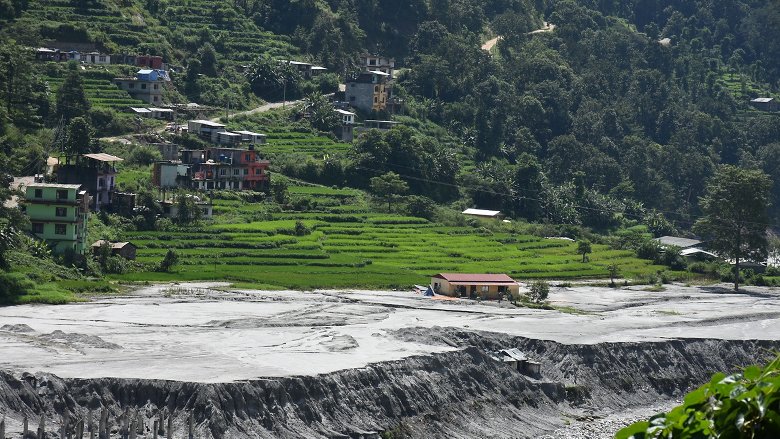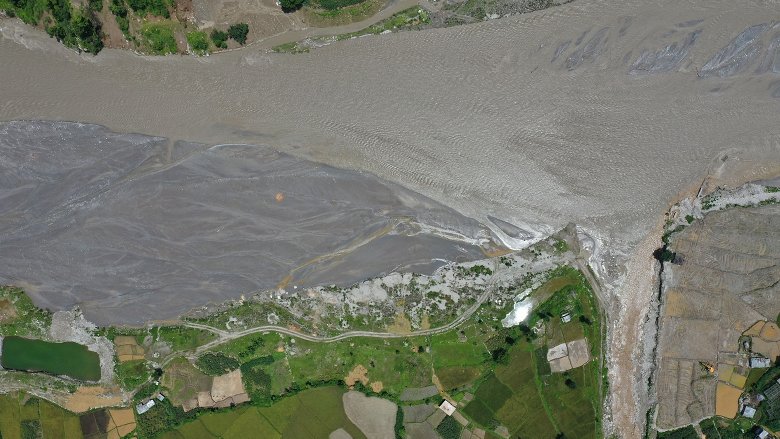If ever there was a time and place that demonstrated the need to reimagine climate resilience, it was 2021 in Nepal. Two climate-related disasters in spring and fall brought heavy rains, floods and landslides that claimed dozens of lives, destroyed hundreds of homes and damaged hundreds more structures, including schools, bridges, government buildings and hydropower stations.
The first onslaught began in June, when monsoons arrived two weeks earlier than usual and dumped more than 300 mm of rainfall on the central and western parts of the country in one week. In the two months that followed, heavy rains upstream triggered a massive erosion of glacial deposits, overtopping of a moraine lake, and the temporary damming and sudden release of water at the elevation of over 3,500 meters above sea level. This sent water and debris tumbling 40 km along the Melamchi River to the market town of Melamchi. The debris flow inundated parts of the community, ripping bridges from their moorings and sending them into the river, where they acted as dams that trapped rubble from the landslide upstream. The headworks of the $800 million project at Melamchi to deliver water to the capital Kathmandu was buried under 10-meter layer of rocks and mud. The same weather system impacted other mountain districts of Gorkha, Manang and Mustang. Numerous settlements were wiped out and thousands of hectares of agricultural land were damaged.
The second disaster came in October, two months after a typical Nepal monsoon season would have ended. Heavy rains moved across western Nepal, killing residents and damaging roads, bridges, hydropower stations and other infrastructure. Because the rains were unseasonal, thousands of hectares of paddy crops that would normally have been safe at that time of year were flooded and destroyed, displacing thousands of farmers and decimating agricultural production in the area.
Making these places and others in Nepal’s mountainous terrain more resilient to an unpredictable and changing climate will require investment in a wide range of complex solutions. The government has risen to the challenge, endorsing a strategic approach to promote green, resilient, and inclusive development, or GRID, as the central development strategy of the country. This approach centers on sustainability, green growth, jobs, resilient infrastructure, and on addressing exclusion and vulnerability, as the country continues to recover from the COVID-19 pandemic.
In late September 2021, the Government of Nepal and 17 development partners endorsed the Kathmandu Declaration on GRID. Many facets of the Kathmandu Declaration are aimed at coping with the slow-moving catastrophe of melting glaciers and severe, unseasonal storms. The government, with the support of partners, has started developing a 10-year GRID Strategic Action Plan and identifying new investments and policies to build resilience.



